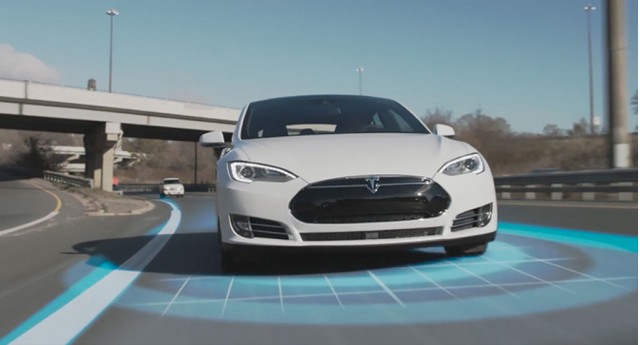
Tesla Autopilot
Since Tesla’s Autopilot was introduced back in October 2014, Tesla CEO Elon Musk has made extravagant claims about its superior safety. Last month, reacting to what Musk considers sensationalized media coverage of Tesla accidents, the company released the first of its promised quarterly safety updates.
The report claimed that, compared to the U.S. automobile crash rate of one every 492,000 miles, Teslas in the second quarter of 2018 had an accident “or crash-like event” every 1.92 million miles. With Autopilot engaged that dropped to one in every 3.34 million miles.
In other words, human-piloted Teslas had accidents at about one quarter the U.S. average, by miles traveled. The rate for Autopilot Teslas was about one-seventh of the U.S. average. (The company did not say how it arrived at the benchmark figure for the U.S. average number.)
![Tesla Model 3 dashboard in Autopilot testing with IIHS [CREDIT: IIHS] Tesla Model 3 dashboard in Autopilot testing with IIHS [CREDIT: IIHS]](https://images.hgmsites.net/med/tesla-model-s-dashboard-in-autopilot-testing-with-iihs-credit-iihs_100665437_m.jpg)
Tesla Model 3 dashboard in Autopilot testing with IIHS [CREDIT: IIHS]
According to the company numbers, cars on Autopilot were nearly twice as safe as human-pilot Teslas, buttressing Musk’s past claims.
DON'T MISS: Tesla's own numbers show Autopilot has higher crash rate than human drivers
Oddly, in its report Tesla did not break out fatal accidents, the ones that have garnered most of the sensational news coverage.
Perhaps that’s because, as it turns out, Teslas on Autopilot actually have a higher fatal accident rate than those driven entirely by humans.
Hard Numbers
Back in November, 2016 I analyzed fatal-crash data for the Model S, comparing cars driven by humans to those driven on Autopilot.
The conclusion: Autopilot had a fatal crash rate approximately double that of human-pilot Teslas—a conclusion radically different from the rosy Autopilot safety picture that Elon Musk and Tesla had so relentlessly promoted.
Page 1 of 4